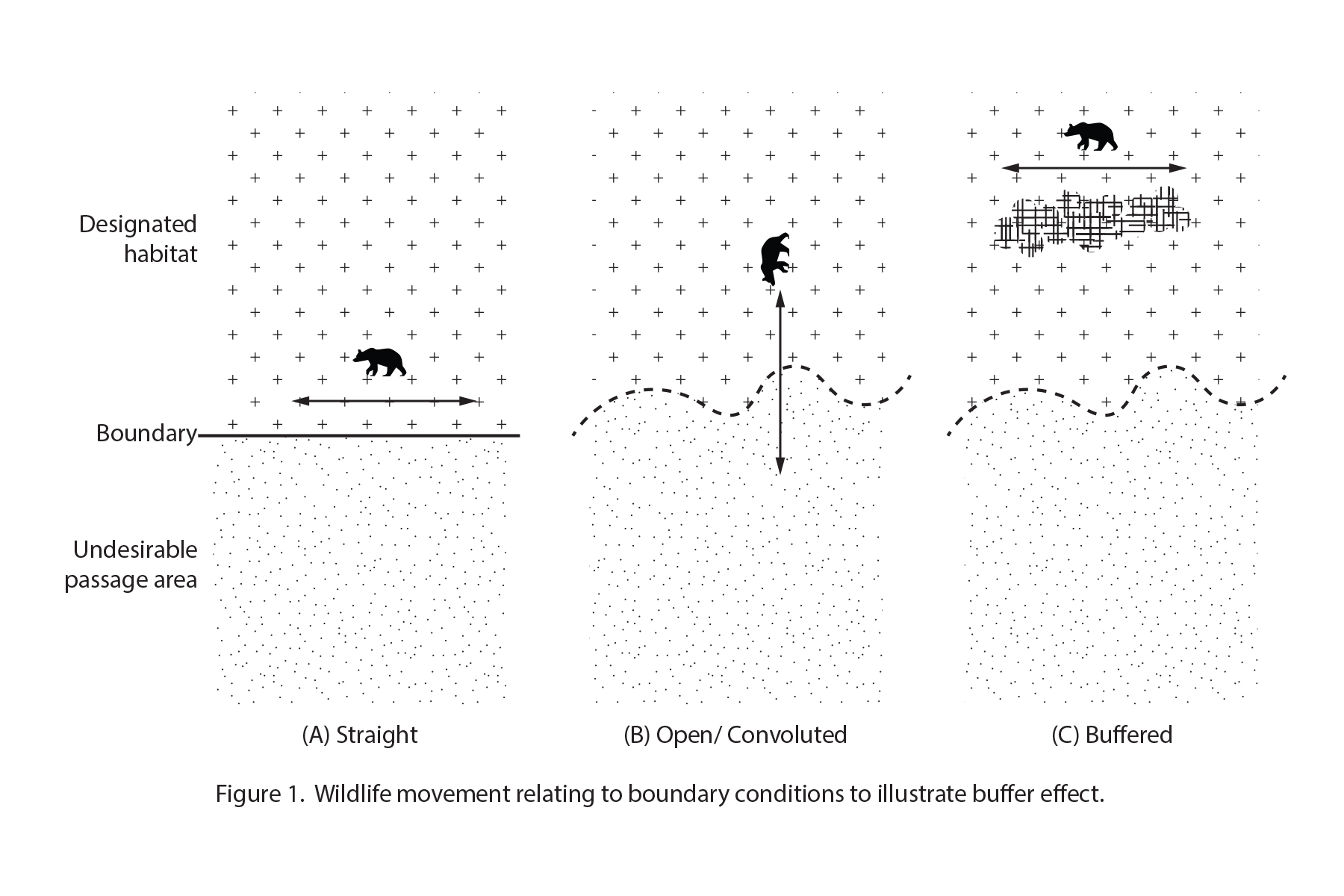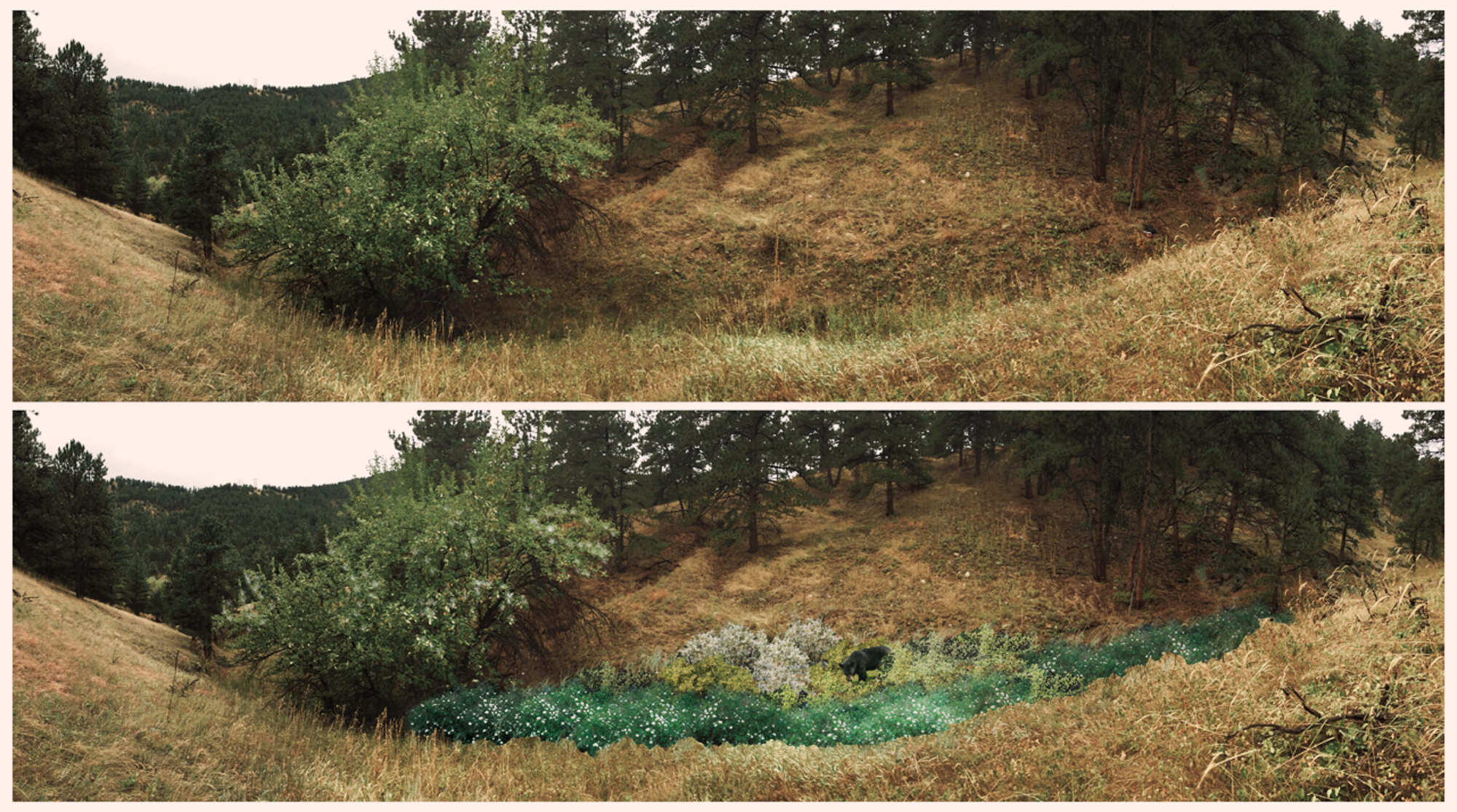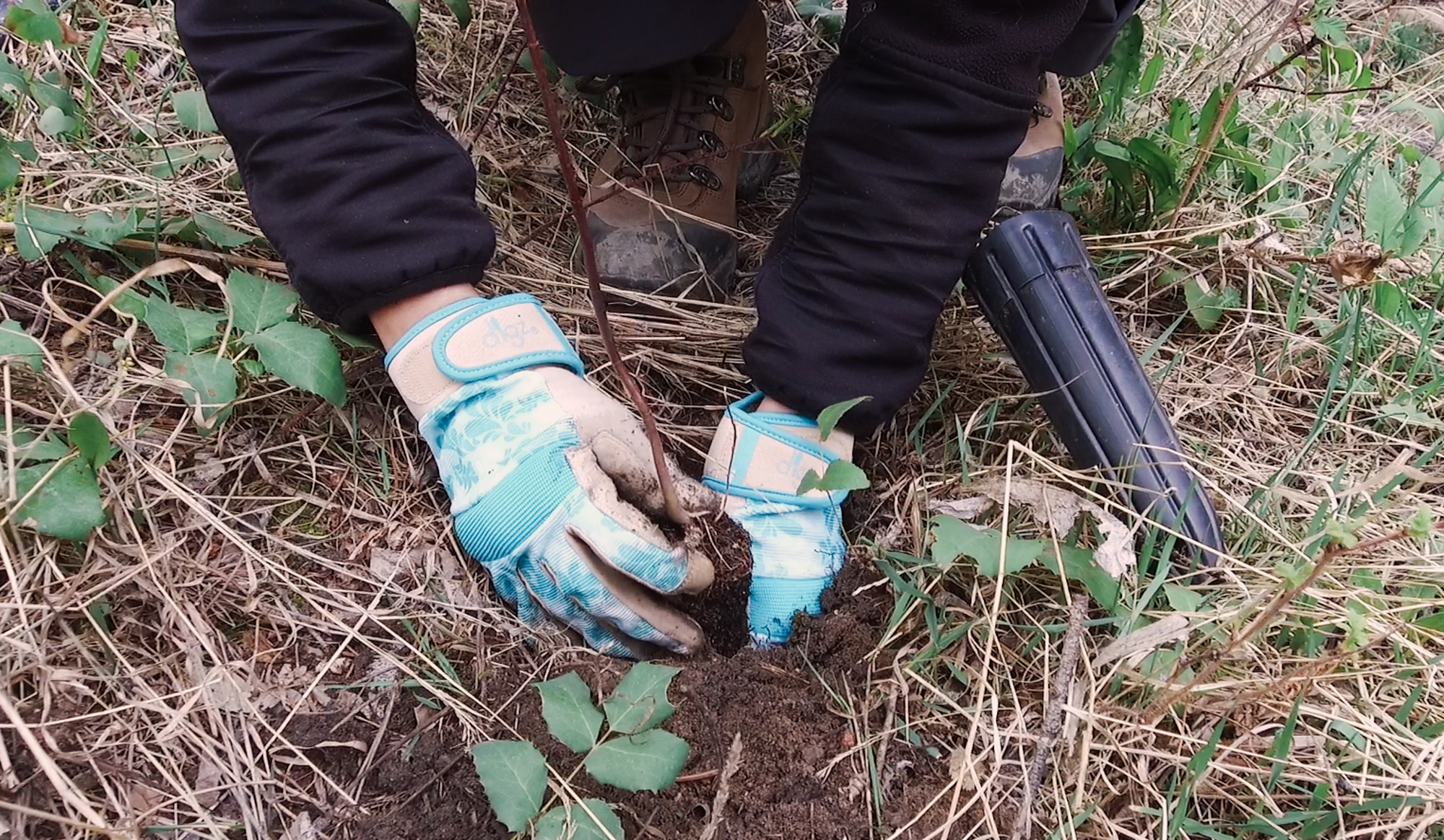Increasing the availability of native food sources in the foothills to keep bears out of urban areas.
In the fall of 2016, Boulder Bear Coalition, City of Boulder Open Space & Mountain Parks, and the WILD Foundation teamed up to develop a new project that would encourage bears to stay out of Boulder’s urban areas, and in their natural mountain habitat.
On April 20, 2017, the three Boulder-based organizations joined in planting two forage buffer sites located in the foothills of City Open Space; one in a Habitat Conservation Area, and the other in a designated Natural Area. Working with the City of Boulder OSMP’s restoration plant ecologist, Megan Bowes, and her team, more than a dozen BBC and WILD volunteers planted over 200 native plants between the two sites. In addition to the shrub planting, wildlife camera traps were installed and will help monitor the success of both sites. The timing of this project proved to be especially meaningful, as Boulder was experiencing an early spring, and corresponding early bear activity.
Since the fall of 2016, BBC and WILD worked together with OSMP to carry out this habitat enhancement project that would increase natural forage in the foothills. This pilot project evolved from exploring the use of “native species forage buffers” as a way to reduce human-bear conflict in urban areas. With much of the bear migration occurring in urban sections of northwestern Boulder, this project aims to accelerate production and recovery of fruit-bearing shrubs in natural black bear habitat. By augmenting natural harvests, bears may be less prone to migrate into urban environments in search of food, thus reducing their presence and interaction with humans within the city. See below in Figure 1.

Documenting plant growth and wildlife activity
Selection of the two project sites was informed by a series of suitability surveys that considered factors of plant growth success, foraging privacy, and instinctive movement across boundaries between designated habitat and urban environments. With similar landscape and vegetation types identified, this pilot project would also support OSMP flood restoration and vegetation efforts, as both areas experienced severe damage due to the fall 2013 flooding. Plants were based on the bears’ natural diets as well as benefits to birds, insects, and all wildlife that depend upon native shrubs as critical habitat: native wax currant, plum, rose, snowberries, and dogwood shrubs.
Trail cameras demonstrated the abundance of wildlife in both areas. The rootstock took to both sites quite well, but were not expected to bear fruit until their second year, in 2018. 2017 camera documentation displayed wildlife activity ranging from mule deer, red fox, bobcats, turkeys, vultures, coyotes, rabbits, and…black bears!
In spring 2018, the cameras went back up to continue documenting plant growth in the buffer zone sites and monitor the abundance of wildlife coming through the area in search of food. Because of two late season freezes in May 2017 that killed off some of the rootstock, the team decided to replant one of the two sites on a very snowy April 24, 2018. Bear activity was caught on camera on April 9, 2018, demonstrating that this site is once again very popular for the bruins.
If these two pilot zones are successful, there may be an opportunity to expand to additional areas throughout the foothills. Success for this project is determined through the number of black bear/wildlife observations caught on the trail cameras, as well as healthy growth and fruit bearing from the planted rootstock.



